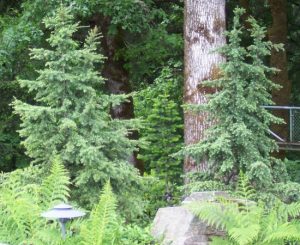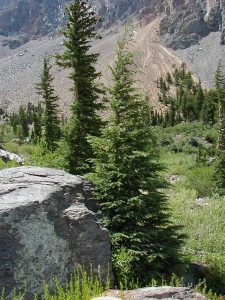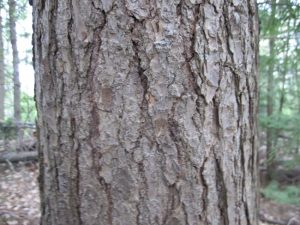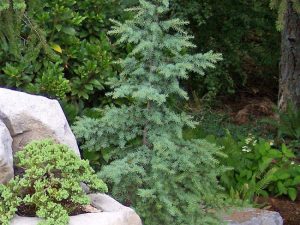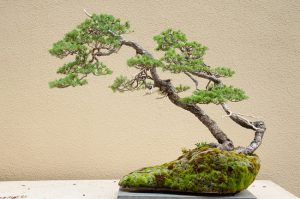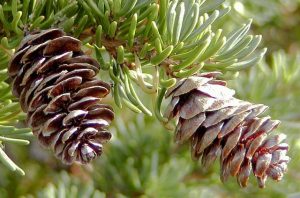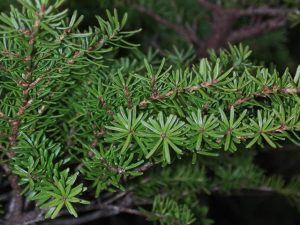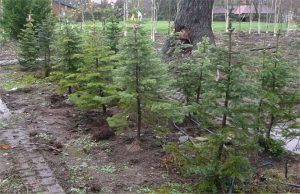Mountain Hemlock
Mountain hemlocks are coniferous trees found across North America’s Pacific Coast.
Scientific Classification
| Kingdom | Plantae |
| Division | Pinophyta |
| Class | Pinopsida |
| Order | Pinales |
| Family | Pinaceae |
| Genus | Tsuga |
| Scientific Name | Tsuga mertensiana |
Quick Information
| Other Names | Hemlock spruce, black hemlock |
| Tree Type | Evergreen |
| Identification | Size: 66-131 ft (20-40 m) Trunk Diameter: 79 in (2 m) Needles (Leaves): ¼-1 in (7-25 mm) long and 1⁄32–1⁄16 in (1-1.5 mm) in breadth, with a blunt tip, and soft texture, glossy and yellow-green to bluish-green Bark: Gray, thin, and furrowed Cones: Small, purple, cylindrical Seeds: Reddish-brown with a slender, pink-brown wing |
| Subspecies |
|
| Distribution | Nevada, California, Oregon, Montana, Idaho, Washington and Alaska in the US, and British Columbia in Canada |
| Habitat | Found in snowy and cold subalpine habitats at elevations of 4,000-7,000 ft |
| Hardiness Zones | 4-8 |
| Growth Rate | Slow |
| Lifespan | 800 years |
| Growing Conditions | Summer Conditions: Grows quicker in summer Winter Conditions: Requires winters that are mild to cold Rainfall: Needs high amount of rainfall Light Requirements: Full sun but shade tolerant Soil: Coarse, loose, well-drained soils with enough moisture |
| Diseases & Pests | Hemlock-willow rust, dwarf mistletoe, black stain root disease, red heart rot, hemlock sawfly, pine spittlebug, green velvet looper, western blackheaded budworm, etc. |
| Reproduction system | Monoecious |
| Propagation | By seeds and cuttings |
| Seedling Development | Germination happens easily |
| Wildlife Value | Offers a nesting site to many birds like the great horned owl, great gray owl, common raven, hairy woodpecker, common flicker, and many more |
| Uses | As an ornamental tree, also used to make small dimension lumber and pulp |
| IUCN Conservation Status | Least Concern |
Interesting Facts
- Karl Mertens, after whom the tree’s Latin name comes from, collected the first specimens in the late 1820s.
- The two most popular cultivars of the mountain hemlock are the ‘Blue Star’ and ‘Glauca.’
References:
- https://www.for.gov.bc.ca/hfd/pubs/docs/bro/bro51.pdf
- https://www2.gov.bc.ca/gov/content/industry/forestry/managing-our-forest-resources/silviculture/tree-species-selection/tree-species-compendium-index/mountain-hemlock
- https://tidcf.nrcan.gc.ca/en/trees/factsheet/295
- https://www.greatplantpicks.org/plantlists/view/1588
- https://www.for.gov.bc.ca/hfd/library/documents/treebook/mountainhemlock.htm
- https://www.conifers.org/pi/Tsuga_mertensiana.php
- https://www.conifers.org/pi/Tsuga_mertensiana.php
Published on July 5th 2017 by Sudipto Chakrabarti under Hemlock.
Article was last reviewed on 5th December 2024.


